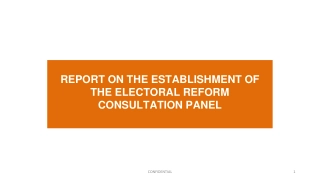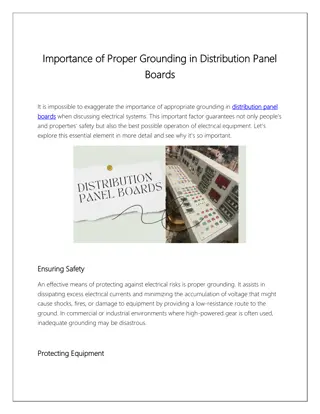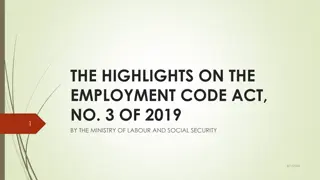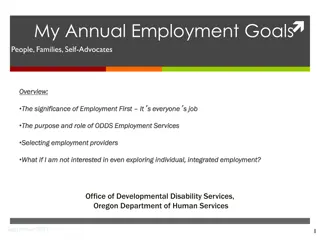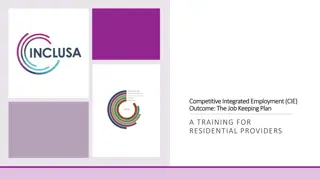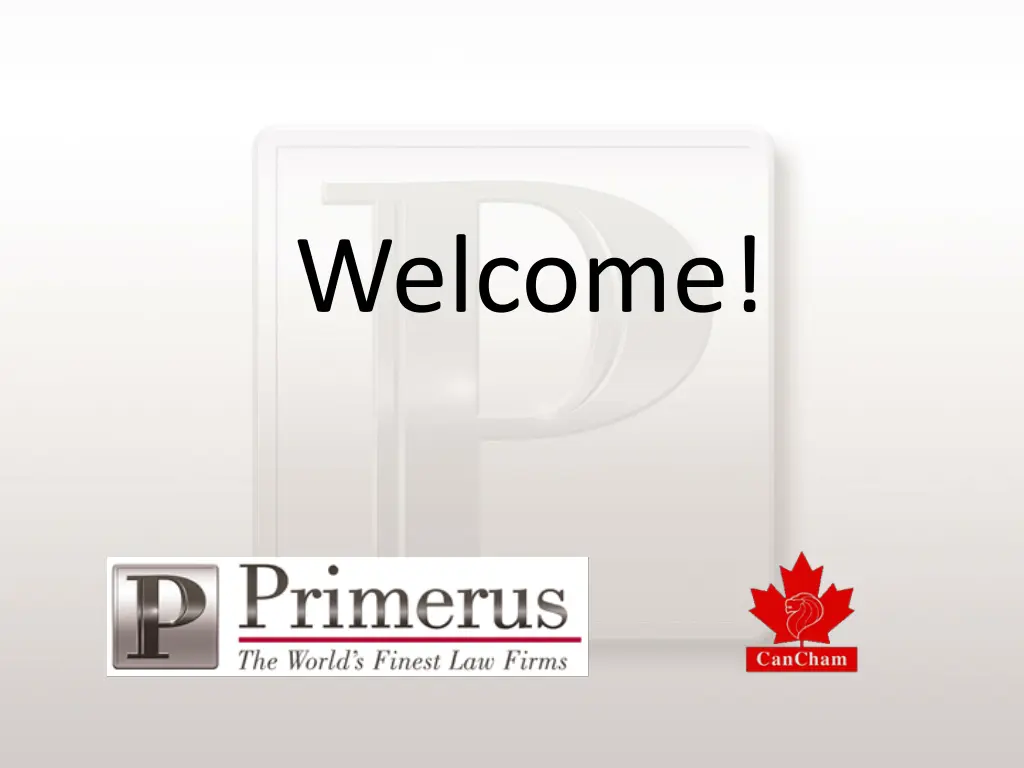
Employment Law Insights in the Asia Pacific Region
Explore key aspects of employment law in the Asia Pacific Region, including employment agreements, non-compete clauses, arbitration systems, and discrimination issues. Gain valuable insights from expert panelists and moderators in this informative discussion.
Download Presentation

Please find below an Image/Link to download the presentation.
The content on the website is provided AS IS for your information and personal use only. It may not be sold, licensed, or shared on other websites without obtaining consent from the author. If you encounter any issues during the download, it is possible that the publisher has removed the file from their server.
You are allowed to download the files provided on this website for personal or commercial use, subject to the condition that they are used lawfully. All files are the property of their respective owners.
The content on the website is provided AS IS for your information and personal use only. It may not be sold, licensed, or shared on other websites without obtaining consent from the author.
E N D
Presentation Transcript
Overview of Employment Law in the Asia Pacific Region
Todays Moderator Caroline Berube HJM Asia Law & Co LLC (China/Singapore)
Todays Panelists Winnie Chiu ONC Lawyers (Hong Kong) Li-Pu Lee Formosan Brothers (Taipei, Taiwan) Murray Thornhill HHG Legal Group (West Perth, Australia) Eshwar Sabapathy S Eshwar Consultants | House of Corporate & IPR Laws (Chennai, India)
Overview of Employment Law in the Asia Pacific Region Panel Discussion A. B. C. D. Employment Agreement Non-Compete clause Arbitration/Court System and its challenges Discrimination
A. Employment Agreement 1. Key mandatory terms (annual leave, sick leave, maternity leave, probation period, pension fund contribution, social charges, termination, etc.) 2. Subject to an Employment Act and/or only Contract Law 3. Validity of a verbal agreement 4. Termination/Severance package
B. Non-Compete clause 1. Validity/Requirements 2. Enforcement
C. Arbitration/Court System and its challenges
D. Discrimination 1. Family 2. Disability 3. Race 4. Sex
Questions? Fore more information about Primerus and today s panelists, please visit www.primerus.com
Supplemental Information
Taiwan Employment Law LiPu Lee Partner Formosan Brothers Attorneys-at-Law 1
Overview Introduciton Sources of Law Major Employment Related Laws Employment Contract Compensation for Occupational Accidents Gender Equality in Employment Non-Competition Clause 13
Introduction- Sources of Law Legislation Case Law Regulation from Ministry of Labor Affairs 14
Introduction- Major Employment Related Laws Labor Standard Act Enforcement Rules of the Labor Standards Act Act for Worker Protection of Mass Redundancy Labor Insurance Act Act of Gender Equality in Employment Employment Service Act Regulations of Leave-Taking of Workers Occupational Safety and Health Act Labor Pension Act 15
Labor Standard Act- Application The application of Labor Standard Act Employee V (Art 2, Subparagraph 1 and 2) Manager X Labor Contract Written Verbal 16
Labor Standard Act- Overview General Provisions Labor Contract Wages Hours, Recess and Holidays Child Workers and Female Workers Labor Standard Act Retirement Compensation for Occupational Accidents Apprentices Work Rules Supervision and Inspection Penal Provisions 17
Labor Standard Act- Labor Contract Termination with Advance Notice by Employer (Art 11) -businesses suspended, transferred, suffers an operating losses, or business contractions. -business suspension for more than one month due to force majeure. -Where the change of the nature of business necessitates the reduction of workforce and the terminated employees can not be reassigned to other suitable positions. -Particular worker clearly not able to perform satisfactorily the duties required of the position held. Termination with Advance Notice by Employer (Art 11) + Severance Pay (Art 17) Non-fixed term labor contracts: Other continuous work (Art 9) Severance Pay (Old labor pension) Art 17: for each year of service= 1 month of average wage (New labor pension) Art 12 of Labor Pension Act: for each year of service= 0.5 month of average wage Types Termination without Advance Notice Fixed term labor contracts: temporary, short-term, seasonal or specific work (Art 9) By Employer (Art 12): worker commits a violent act, in serious breach of the labor, absent from work for three consecutive days, or for a total six days in any month without good cause, etc. By Employee (Art 14): employer commits violence/grossly insults the worker; employer breaches a labor contract or violates any labor statute or administrative regulation in a manner likely to adversely affect the rights and interests of the particular worker, etc. 18
Labor Standard Act- Wages Wages shall be paid in full directly to the worker. (Art 22) Wages shall be paid on a regular basis at least twice a month. (Art 23) An employer shall pay a worker overtime wages. (Art 24) An employer shall under no condition discriminate between the sexes in the payment of wages. (Art 25) An employer shall not make advance deduction of wages as penalty for breach of contract or as indemnity. (Art 26) In the case of employer winding up or liquidating his/ her business or being adjudicated bankrupt, the worker shall have a top-priority right in receiving repayment for wages which are payable under the labor contract and should be paid up to six months arrear wage. (Art 28) 19
Labor Standard Act- Work Rules An employer hiring more than 30 workers shall set up work rules (Art 70) 1. Working hours, recess, holidays, annual paid leave of absence and the rotation of shifts for continuous operations 2. Standards, method of calculation and pay day of payable wages 3. Length of overtime work 4. Allowances and bonuses 6. Rules for attendance, leave-taking, award and discipline, promotions and transfer 5. Disciplinary measures 7. Rules for recruitment, discharge, severance, termination and retirement 8. Compensation and consolation payment for accident, injury or disease 10. Safety and health regulations to be followed and observed both the employer and the worker 9. Welfare measures 11. Methods for communication of views and enhancement of cooperation between employer and worker 12. Miscellaneous matters 20
Labor Standard Act- Compensation for Occupational Accidents (Art 59) injured or suffers from any occupational disease -necessary medical expenses. under medical treatment not able to work -compensation according to his/her pre-existing wage Occupational Accidents after the termination of medical treatment the designated hospital has definitely diagnosed that the worker is disabled forever -a lump sum as disability compensation in accordance with he/her average wage and the degree of disability -funeral subsidy equal to 5 months of average wage + a lump sum survivors compensation equal to 40 months of average wage to his/her survivors died of occupational injury or disease 21
Labor Standard Act- Compensation for Occupational Accidents Strict liability of employer Compensation (Art 59 & 60) Employer may deduct the paid insurance payment from the total compensation to be paid If employer insures the employee according to Labor Insurance Act Insurance payment 3 layers of protection Negligence of employer Indemnity A civil claim. Different compensation for the loss or decrease of employee s laboring capacity, or the increase of the need in living 22
Act of Gender Equality in Employment - Overview General Provisions Prohibition of Gender Discrimination Prevention and Correction of Sexual Harassment Act of Gender Equality in Employment Measures for Promoting Equality in Employment Complaint Procedures and Remedies Penal Provisions 23
Act of Gender Equality in Employment - Prevention and Correction of Sexual Harassment (Art 13) Employers shall prevent and correct sexual harassment from occurrence. For employers hiring over 30 employees, measures for preventing, correcting sexual harassment, related complaint procedures and disciplinary measures shall be established. All these measures mentioned above shall be openly displayed in the workplace. 24
Non-Competition Clause Requirements for an Enforceable Non-Competition Clause: The employer shall have some legitimate interests to be protected. The employee is allowed to access the employer s trade secrete. The restrictions must be reasonable in terms of the subject, duration, geographical area and scope. There must be compensation measures. 25
Thank you! 26

